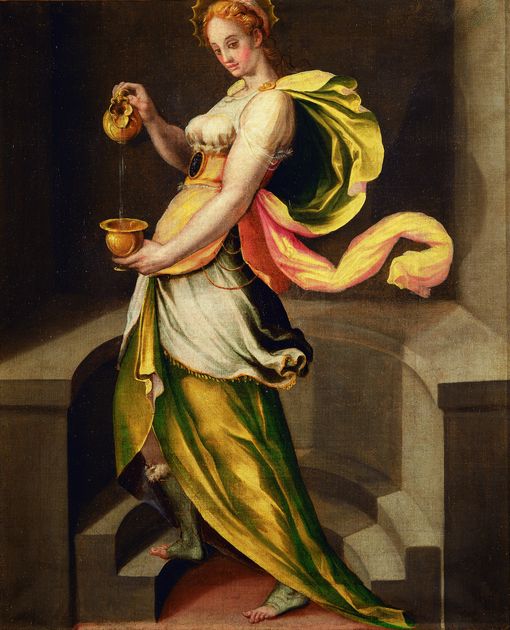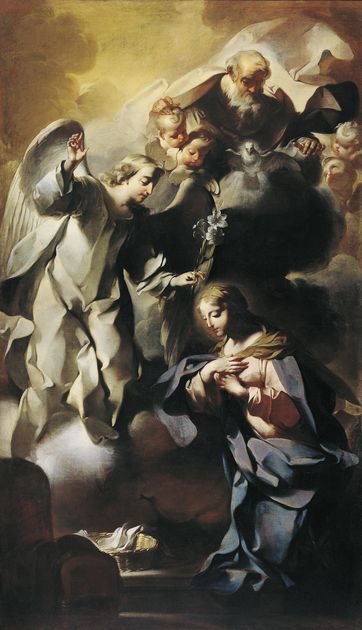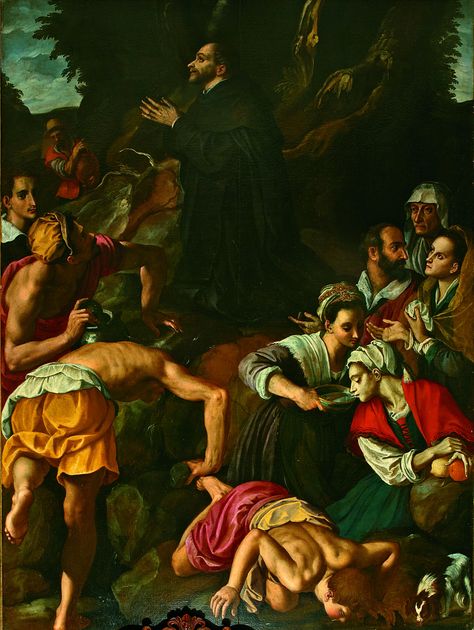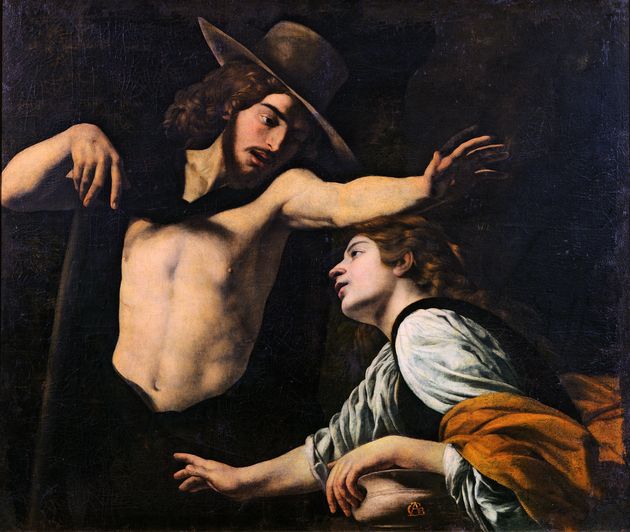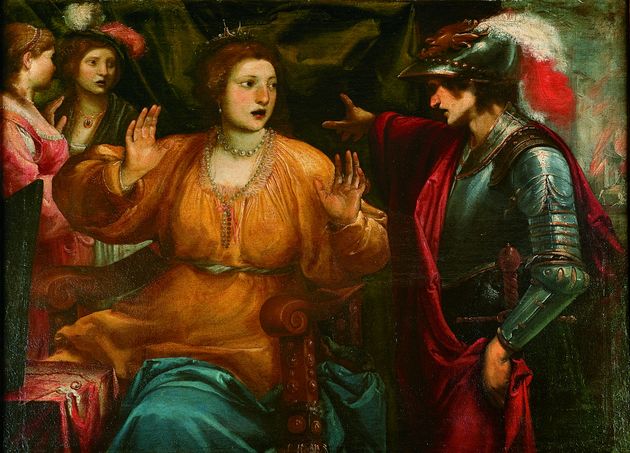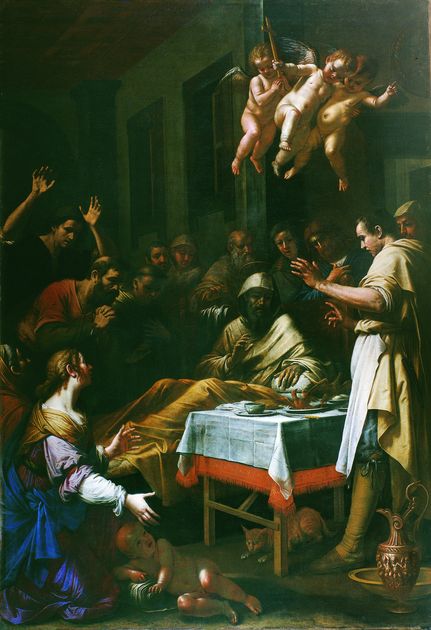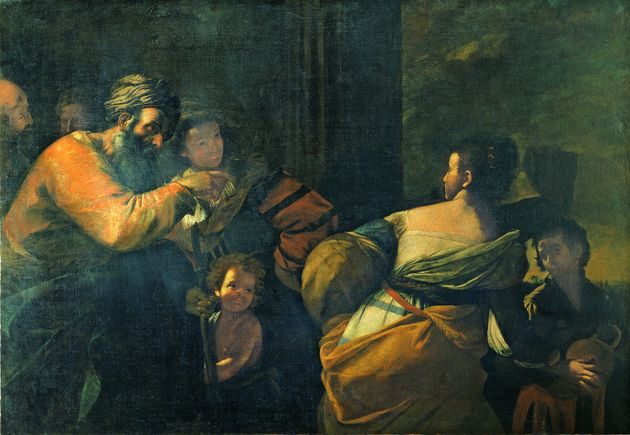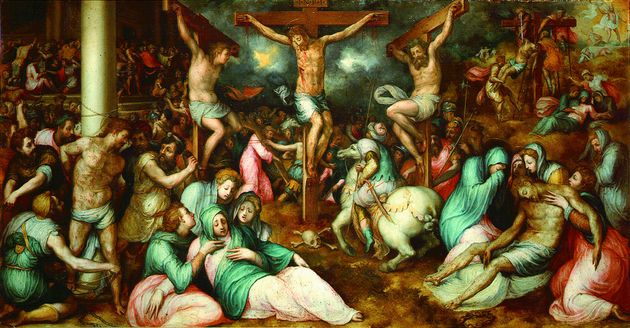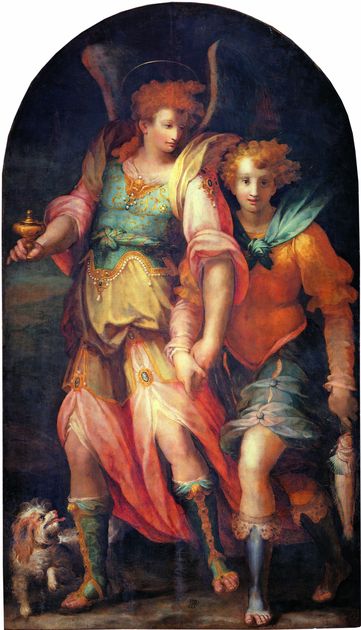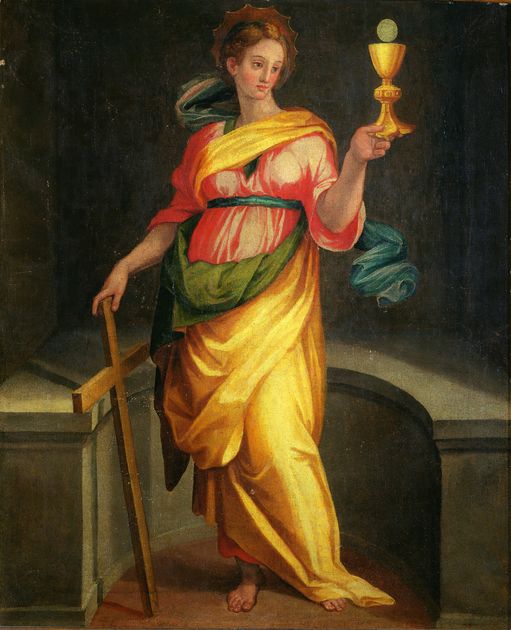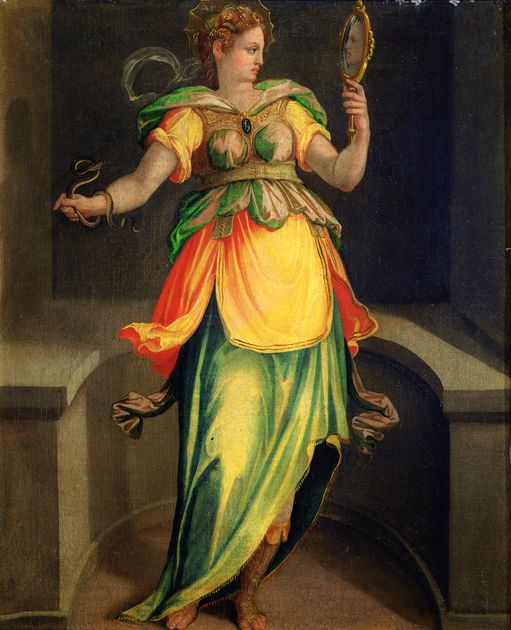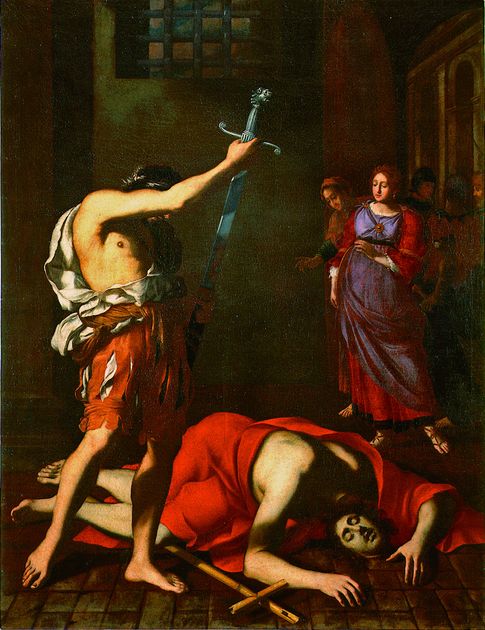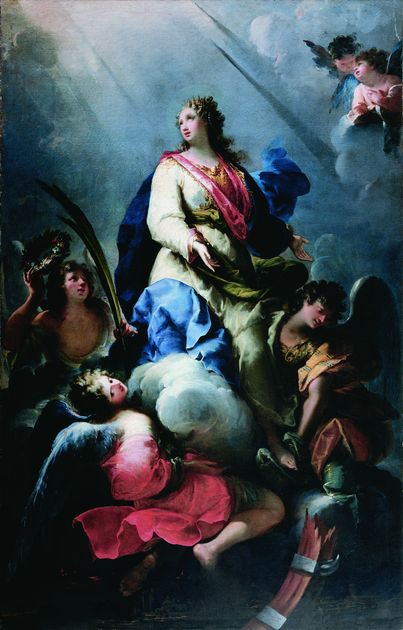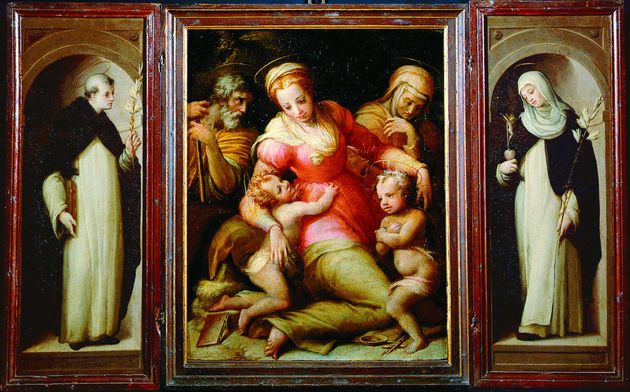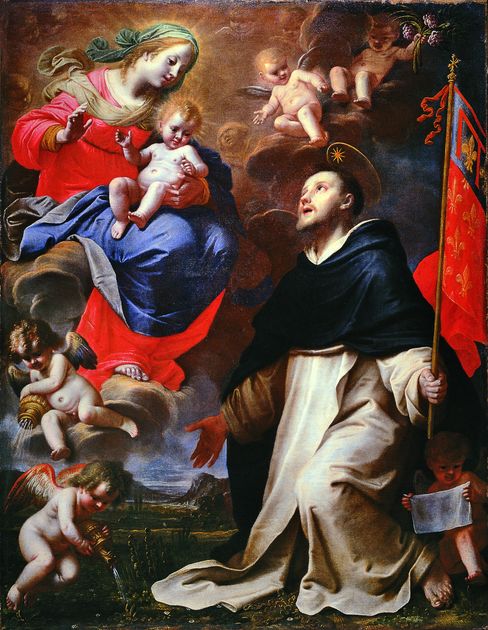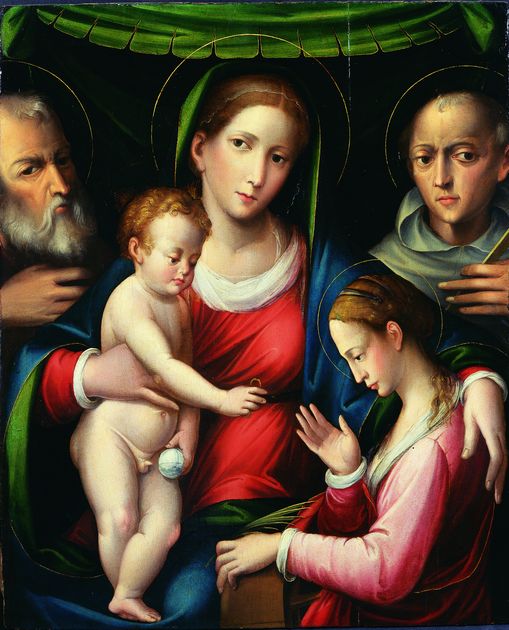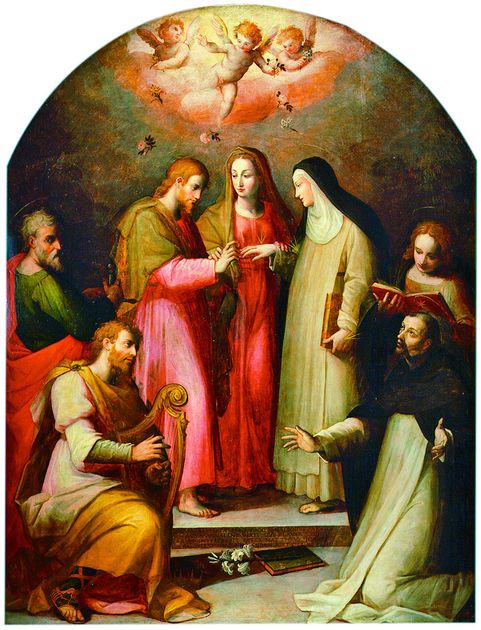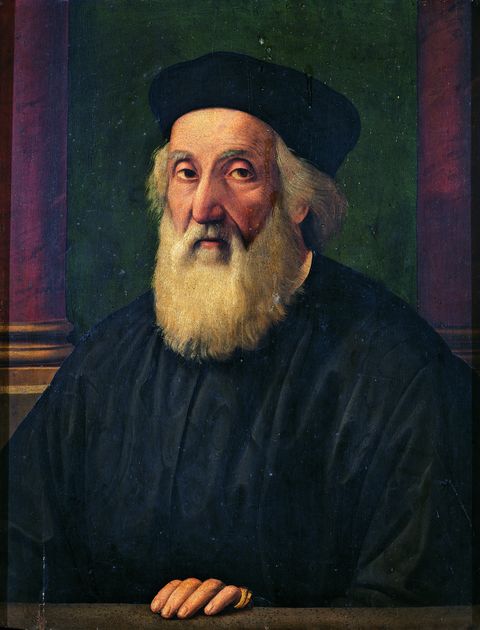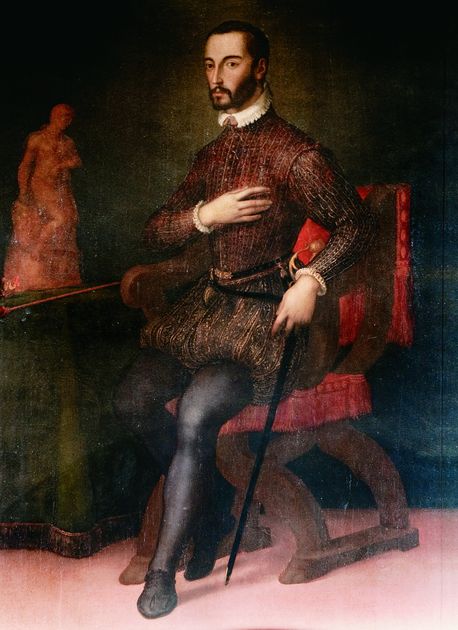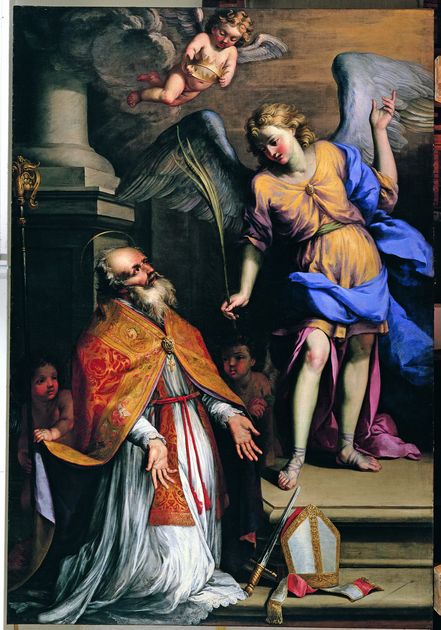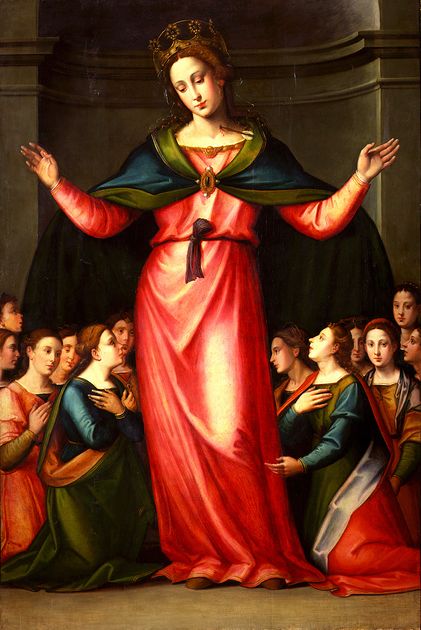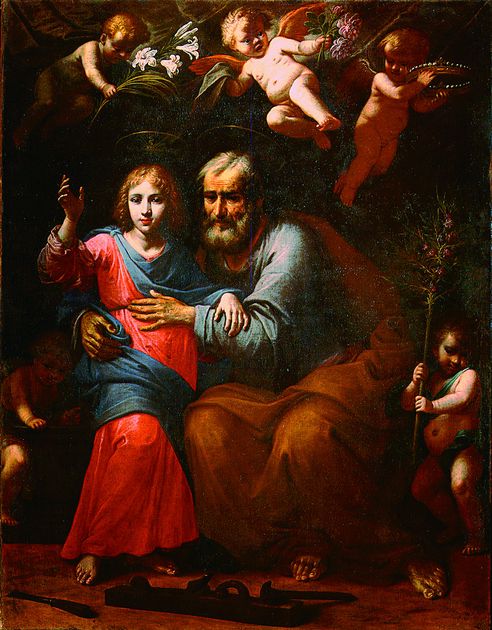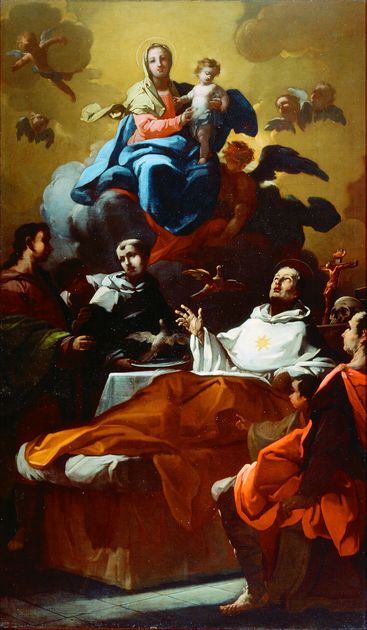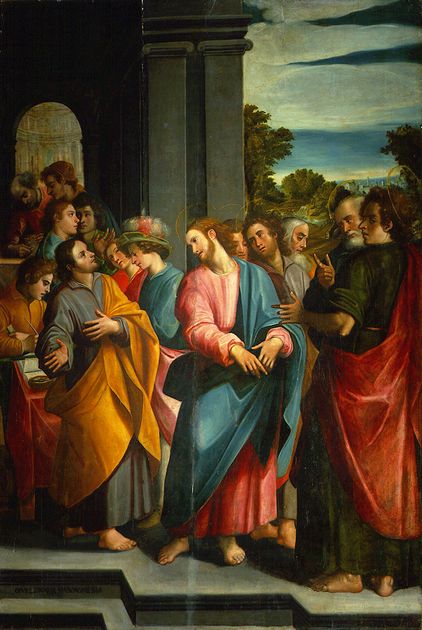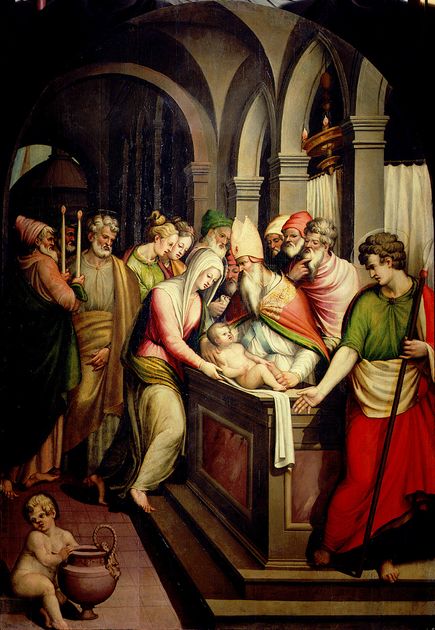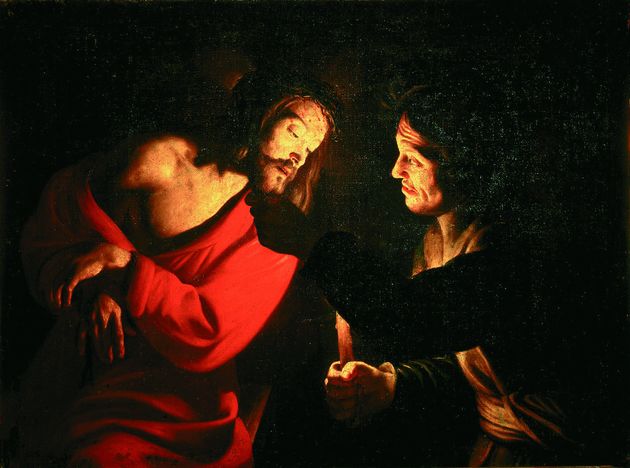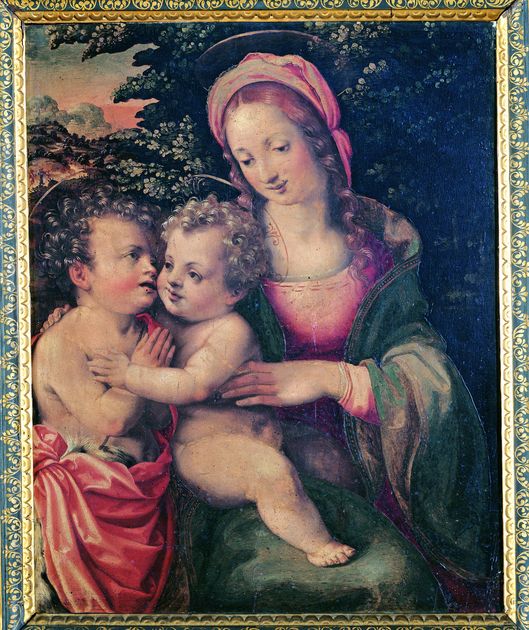In 1624 the Ceppo Nuovo charity organisation commissioned Giovanni Bilivert, the favourite pupil of Ludovico Cardi called the Cigoli, an Annunciation for the church of San Francesco in Prato. The payments from 1628 indicate the beginning of the works, which were completed two years later, as confirmed by the date and signature inscribed by the painter on the kneeling stool.
In this simple, balanced work, which has however a certain aristocratic refinement, we are struck by the devoted everyday simplicity of the figures. The influence of Cigoli and references to Rosselli and Francesco Furini can be seen in the complex composition, which presents scenographic effects in the background with the openings onto the outside landscape; also in the luminous background of the sky, which however lacks any theatricality or tension. The dark, deep background from which the furnishing of the room and the fine vase of lilies dimly emerge, accentuates the figures, which are arranged on the diagonal of the painting and wrapped in luminous, flowingly voluminous robes.
The composed, humble pose of the Virgin, resembling an adoration of the Child, is particularly fine.
The Uffizi Prints and Drawings Cabinet preserves a preparatory drawing for this painting, which at that time had a great approval as Bilivert’s pupil and biographer Orazio Fidani testifies. The altarpiece was so appreciated that Bilivert in 1633 painted a replica of this subject for Saint Cross in Bastia, a church in Corsica.

